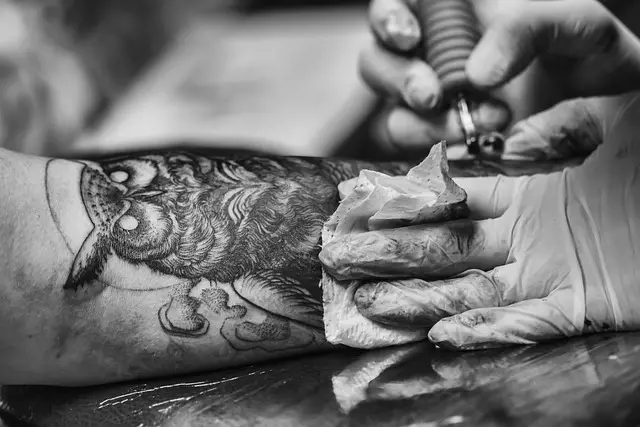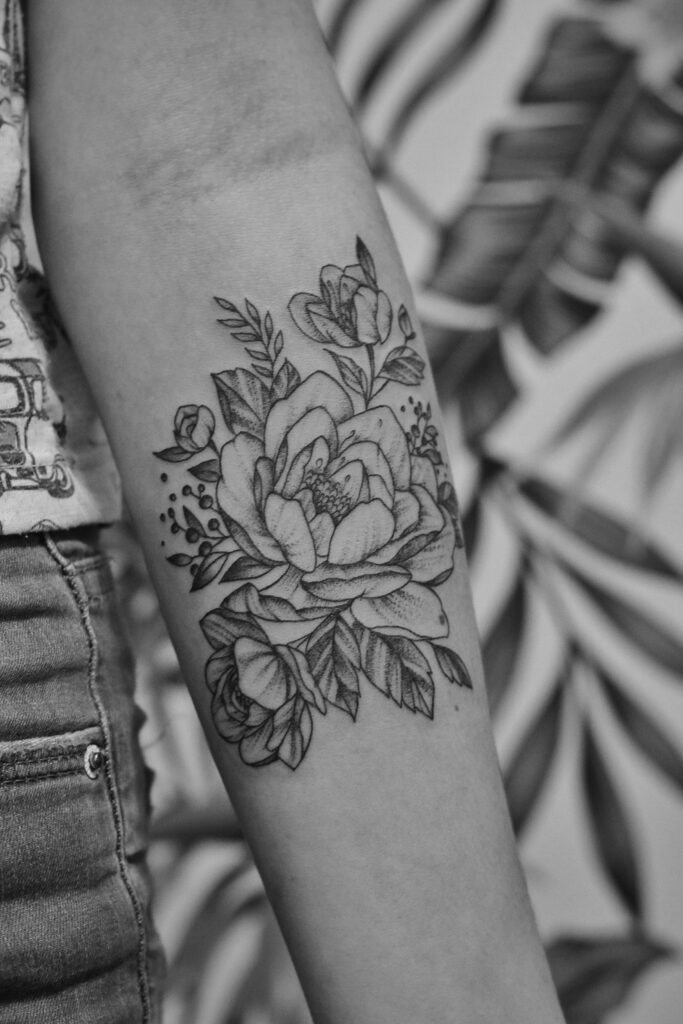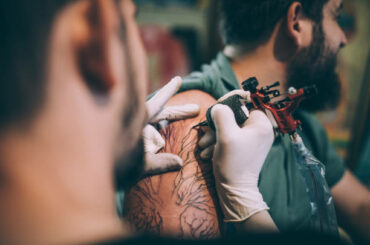Contents
Tattoo shock symptoms
Introduction
Tattoo shock symptoms encompass the range of physical and emotional reactions that individuals may experience after undergoing the tattooing process. These symptoms hold significant importance in the context of getting a tattoo, as they offer insight into the body’s response to the procedure and its subsequent healing stages.
Understanding these potential reactions or responses is crucial for anyone considering or undergoing the tattooing process. Tattoos, while often regarded as expressions of personal style or meaningful symbolism, entail a degree of physical trauma to the skin. Consequently, being aware of tattoo shock symptoms allows individuals to anticipate and address potential challenges associated with the healing process.
Moreover, the significance of comprehending tattoo shock symptoms extends beyond mere awareness. By understanding the body’s potential reactions, individuals can take proactive measures to promote healing, minimize discomfort, and reduce the risk of complications. This knowledge empowers individuals to make informed decisions before, during, and after getting a tattoo, ultimately contributing to a safer and more satisfying tattooing experience.
Understanding Tattoo Shock Symptoms
Tattoo shock symptoms encompass a spectrum of physical and emotional responses that individuals may experience following the tattooing process. These symptoms provide valuable insight into the body’s reaction to the trauma of tattooing and the subsequent healing process, aiding in understanding and managing post-tattoo effects effectively.
Explanation of Tattoo Shock Symptoms:
Tattoo shock symptoms can manifest in various forms, including:
Pain and discomfort: Soreness and tenderness around the tattooed area are common immediately after tattooing, reflecting the body’s response to the trauma inflicted during the procedure.
Swelling and inflammation: The tattooed skin may become swollen and inflamed as part of the natural healing process, characterized by redness and warmth around the tattoo site.
Itching and peeling: As the tattoo heals, the skin may itch and peel, similar to the sensation experienced during sunburn recovery.
Allergic reactions: Some individuals may experience allergic reactions to tattoo ink or other components used during the tattooing process, resulting in itching, rash, or swelling beyond the tattooed area.
Risk of infection: Infections can occur if proper aftercare measures are not followed, leading to symptoms such as increased pain, redness, and pus drainage from the tattoo site.
Emotional responses: Getting a tattoo can evoke a range of emotions, including excitement, euphoria, or even regret, depending on personal experiences and perceptions.
Discussion on Variation of Symptoms:
Tattoo shock symptoms may vary significantly from person to person due to factors such as:
Individual pain tolerance: Some individuals may experience more discomfort during and after tattooing than others, influenced by factors such as pain threshold and sensitivity.
Skin type and condition: Differences in skin type, texture, and condition can affect how the body responds to tattooing, influencing the severity and duration of symptoms.
Allergic predisposition: Individuals with known allergies or sensitivities may be more prone to experiencing allergic reactions to tattoo ink or other tattooing materials.
Tattoo size and location: The size and placement of the tattoo can influence the intensity of symptoms, with larger or more intricate designs often causing more significant discomfort and longer healing times.
By understanding the diverse nature of tattoo shock symptoms and their potential variations, individuals can better prepare for the tattooing process and take appropriate measures to manage post-tattoo effects effectively. This knowledge empowers individuals to anticipate and address potential challenges, ultimately contributing to a smoother and more positive tattooing experience.

Common Tattoo Shock Symptoms
After getting a tattoo, individuals may experience a variety of symptoms that are commonly associated with the body’s healing process and reaction to the tattooing procedure. Understanding these symptoms can help individuals recognize normal healing versus potential complications.
1. Pain and Swelling:
Pain and discomfort around the tattooed area are typical immediately after getting a tattoo.
Swelling may occur as part of the body’s natural response to the trauma of tattooing.
2. Redness and Inflammation:
The tattooed skin may appear red and inflamed, resembling a mild sunburn.
Redness and warmth around the tattoo site are common as the body initiates the healing process.
3. Itching and Peeling:
As the tattoo heals, the skin may itch and peel, similar to the sensation experienced during sunburn recovery.
It’s important to resist the urge to scratch or pick at the tattoo to avoid disrupting the healing process.
4. Allergic Reactions:
Some individuals may experience allergic reactions to tattoo ink or other materials used during the tattooing process.
Symptoms of an allergic reaction may include itching, rash, hives, or swelling beyond the tattooed area.
5. Risk of Infection:
Signs of infection include increased pain, redness, swelling, pus drainage, or fever.
6. Fainting or Dizziness:
Some individuals may experience fainting, dizziness, or lightheadedness during or after getting a tattoo.
These reactions are often related to pain, anxiety, or prolonged exposure to the tattooing process.
7. Emotional Responses:
Getting a tattoo can evoke a range of emotions, including excitement, euphoria, or even regret.
Emotional responses may vary depending on personal experiences, motivations for getting the tattoo, and perceptions of body art.
Recognizing these common tattoo shock symptoms can help individuals distinguish between normal healing and potential complications. It’s essential to monitor symptoms closely and seek medical attention if any concerns arise, such as signs of infection or severe allergic reactions. Proper aftercare, including keeping the tattoo clean and moisturized, can help promote healing and reduce the risk of complications. Additionally, discussing any concerns or questions with a professional tattoo artist can provide valuable guidance and support throughout the healing process.
Causes of Tattoo Shock Symptoms
Understanding the underlying reasons behind tattoo shock symptoms requires examining the various factors that contribute to the body’s response to the tattooing process. Several key factors play a role in determining how individuals experience and respond to the physical and emotional effects of getting a tattoo.
1. Trauma to the Skin:
The tattooing process involves piercing the skin with a needle to deposit ink into the dermis layer. This physical trauma can cause pain, swelling, and inflammation as the body initiates the healing process to repair the damaged skin.
2. Inflammatory Response:
The body’s natural response to tissue injury, including tattooing, involves inflammation. This inflammatory response is characterized by redness, warmth, and swelling around the tattoo site as blood flow increases to deliver immune cells and nutrients necessary for healing.
3. Immune Reaction to Tattoo Ink:
Some individuals may experience allergic reactions to tattoo ink or other materials used during the tattooing process. These allergic reactions can trigger symptoms such as itching, rash, or swelling beyond the tattooed area.
4. Risk of Infection:
The risk of infection is inherent in any procedure that breaks the skin’s barrier, including tattooing. Improper sterilization of equipment or inadequate aftercare measures can increase the likelihood of bacterial or viral infections, leading to symptoms such as increased pain, redness, swelling, and pus drainage from the tattoo site.
5. Individual Factors:
Individual differences in pain sensitivity, skin type, and immune system response can influence how individuals experience tattoo shock symptoms. Factors such as age, overall health, and pre-existing medical conditions may also affect the body’s ability to heal and respond to the tattooing process.
6. Emotional Stress and Anxiety:
Emotional stress and anxiety can exacerbate physical symptoms experienced during and after getting a tattoo. Fear of pain, concerns about the tattoo’s appearance, or anxiety about the permanence of the decision may contribute to increased sensitivity and emotional responses during the tattooing process.
7. Tattoo Size, Placement, and Technique:
The size, placement, and technique used during tattooing can influence the severity and duration of tattoo shock symptoms. Larger or more intricate tattoos may cause more significant discomfort and longer healing times, while tattoos in sensitive areas or over bony prominences may be more painful.
By examining these underlying causes of tattoo shock symptoms, individuals can gain a better understanding of the factors contributing to their post-tattoo experiences. This knowledge can inform decision-making, preparation, and aftercare practices to promote healing and minimize discomfort during the tattooing process.

Managing Tattoo Shock Symptoms
After getting a tattoo, managing tattoo shock symptoms effectively is crucial for promoting healing, minimizing discomfort, and reducing the risk of complications. Here are some practical tips and strategies to help individuals navigate the post-tattoo healing process:
1. Proper Aftercare Techniques:
Avoid exposure to sunlight, swimming pools, hot tubs, and saunas during the initial healing period to prevent infection and fading.
Avoid tight clothing or abrasive materials that may irritate the tattooed area.
2. Seeking Medical Attention if Necessary:
Monitor the tattooed area closely for any signs of infection, such as increased pain, redness, swelling, pus drainage, or fever.
If you suspect an infection or experience severe allergic reactions, seek medical attention promptly. Your healthcare provider can assess the symptoms and recommend appropriate treatment, such as antibiotics for infections or corticosteroids for allergic reactions.
3. Avoiding Common Pitfalls During the Healing Process:
Resist the urge to scratch or pick at the tattoo, as this can disrupt the healing process and increase the risk of infection or scarring.
Avoid exposing the tattoo to excessive moisture or friction, as this can delay healing and cause irritation.
Refrain from submerging the tattoo in water, such as swimming or bathing, until it has fully healed to prevent bacterial contamination.
Avoid applying excessive amounts of ointments or creams to the tattoo, as this can clog pores and hinder the skin’s ability to breathe.
By following these practical tips and strategies, individuals can effectively manage tattoo shock symptoms and promote optimal healing and outcomes. Remember to be patient and attentive to your body’s signals during the healing process, and don’t hesitate to seek professional advice if you have any concerns or questions about your tattoo’s healing progress. With proper care and attention, you can enjoy your new tattoo safely and comfortably for years to come.
Prevention and Precautions
Taking preventive measures is key to minimizing the risk of experiencing tattoo shock symptoms and ensuring a safe and successful tattooing experience. Here are some important considerations to help prevent complications and promote optimal healing:
1. Choose a Reputable Tattoo Artist:
Research and select a reputable tattoo artist with a proven track record of professionalism, skill, and hygiene.
Read reviews, ask for recommendations from trusted sources, and visit the tattoo studio in person to assess cleanliness and safety standards.
Verify that the tattoo artist uses sterile equipment, practices proper infection control measures, and follows industry best practices for tattooing.
2. Prioritize Hygiene Protocols:
Ensure that the tattoo studio maintains a clean and sanitary environment, including sterilization of equipment and surfaces between clients.
Confirm that the tattoo artist wears disposable gloves, uses single-use needles and ink caps, and adheres to strict hygiene protocols throughout the tattooing process.
If you have any concerns about hygiene practices or safety standards, don’t hesitate to ask questions or seek clarification from the tattoo artist or studio staff.
3. Communicate Your Needs and Concerns:
Openly communicate with your tattoo artist about your expectations, preferences, and any medical conditions or allergies you may have.
Discuss the design, size, placement, and desired outcome of the tattoo to ensure mutual understanding and agreement before starting the tattooing process.
Don’t hesitate to voice any concerns or questions you may have about the tattooing process, aftercare instructions, or potential risks associated with getting a tattoo.
4. Practice Self-Care and Preparation:
Prioritize your health and well-being by ensuring you are well-rested, hydrated, and in good physical condition before getting a tattoo.
Eat a balanced meal and avoid consuming alcohol or drugs that may impair judgment or affect your ability to tolerate pain during the tattooing process.
Consider scheduling your tattoo appointment during a time when you are least stressed or anxious to help minimize emotional and physical discomfort.
5. Follow Aftercare Instructions Diligently:
Adhere to the aftercare instructions provided by your tattoo artist to promote proper healing and minimize the risk of infection or complications.
Keep the tattooed area clean, dry, and protected from exposure to sunlight, moisture, and friction during the initial healing period.
Avoid activities that may irritate or damage the tattooed skin, such as excessive sweating, rubbing, or wearing tight clothing over the tattoo site.
By following these preventive measures and precautions, you can minimize the risk of experiencing tattoo shock symptoms and maximize the likelihood of a safe, successful, and satisfying tattooing experience. Remember that investing time and effort into proper research, preparation, and aftercare can contribute to the longevity and quality of your tattoo while safeguarding your health and well-being.

Conclusion
In conclusion, understanding tattoo shock symptoms and taking proactive steps to manage them effectively are essential aspects of ensuring a safe and satisfactory tattooing experience. By being aware of common symptoms, their underlying causes, and practical strategies for prevention and management, individuals can navigate the tattooing process with confidence and minimize the risk of complications.
Throughout this discussion, we’ve highlighted the importance of choosing a reputable tattoo artist, prioritizing hygiene protocols, and communicating openly about expectations and concerns. We’ve also emphasized the significance of proper aftercare, including following instructions diligently and seeking medical attention if necessary.
It’s essential to be informed and proactive when getting a tattoo, as this allows individuals to make educated decisions and take ownership of their tattooing experience. By investing time and effort into research, preparation, and aftercare, individuals can reduce the likelihood of experiencing tattoo shock symptoms and increase the likelihood of a safe, successful, and satisfying outcome.
Ultimately, whether it’s your first tattoo or one of many, prioritizing your health and well-being throughout the tattooing process is paramount. By following the guidelines outlined in this article and being proactive in your approach, you can enjoy your new tattoo with confidence, knowing that you’ve taken the necessary precautions to promote optimal healing and minimize risks.
Remember, getting a tattoo is a personal and meaningful decision, and by being informed and proactive, you can ensure that your tattooing experience is both safe and satisfactory.





